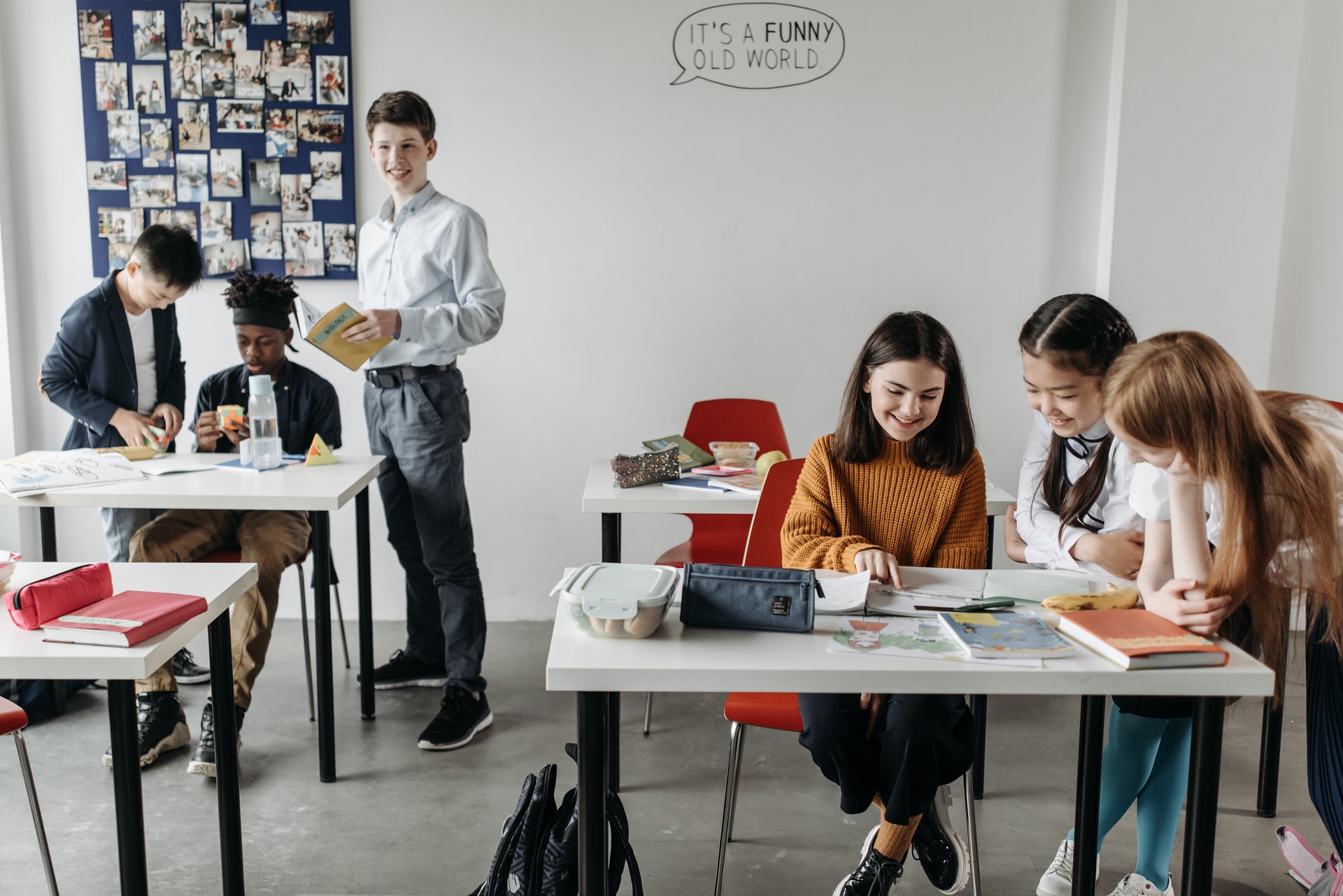
We are a reader-supported education publication. When you buy through links on our site, we may earn an affiliate commission to help us keep providing content.
Although Einstein might never have said, “If you judge a fish by its ability to climb a tree, it will live its whole life believing it is stupid,” the sentiment behind the saying is vital for educators to embrace. Any given classroom contains students with diverse learning styles, and talented teachers incorporate activities that engage them in their lesson planning.
If you are new to the classroom or looking to grow your skills, you might wonder what techniques to use to reach every learner. Here are four activities that engage diverse learning styles to use this coming semester.
1. Think-Pair-Share
Think-pair-share is an activity that lends itself to nearly any subject imaginable, from calculus to physical education. The basic premise is simple. The teacher begins by asking students what they know about a topic and gives them a few minutes to reflect. Doing so gives students the opportunity to prime their brains for integrating new knowledge with what they already know.
The teacher then pairs students to discuss what they know, allowing several moments for discussion. Finally, they reconvene the class, sharing everyone’s ideas in a group chat.
This activity also provides educators with a valuable opportunity to assess students’ prior knowledge, both individually and collectively. By circulating the room as pairs engage in small conversations, instructors can immediately pinpoint the most glaring fallacies and the topics that many learners have never been exposed to before.
Teachers can then immediately correct misconceptions. They can also modify their lesson plans to provide the prerequisite knowledge students need to fully grasp the material.
The benefits are mutual. Students can also immediately recognize their areas of deficiency and whet their curiosity for learning more.
2. Build a Scene
This activity engages students who fall into any of the four VARK model styles: visual, auditory, kinesthetic or reading and writing. It lends itself more to language arts and social studies, although creative math and science teachers can get in on the fun, too.
To complete this activity, divide students into groups of four. If possible, try to arrange the groups to have one pupil with each of the four VARK styles.
Then, assign each group a scene from a novel or a historical event. Give an open-ended set of project directions. Students might choose to build a panorama, for example, and have a narrator present a written description of events. They might also build a small set and costumes to act it out.
Students who identify as readers and writers can pen the narrative or script. Kinesthetic and visual learners showcase their skills. The spoken component allows auditory learners to absorb the material.
3. Discussion Ball
Here’s an activity that can double as an icebreaker at the beginning of each semester. The simplest version operates somewhat like musical chairs. Students toss the ball around the room while the teacher plays a tune. When the music stops, the teacher asks the student left holding the ball a question.
Engage the reading and writing learning style by having them write the questions. You can have them scribble their ideas on notecards to transfer to the ball or distribute tennis balls to each student. Passing the ball, discussing student answers and using eye-hand coordination to catch it engages the kinesthetic, auditory and visual learners in your classroom.
4. Learning Stations
Learning stations are a fabulous way to increase student engagement while tailoring lessons to various learning styles. You can unite the various stations around a theme or arrange them by subject matter if you teach at the elementary level. For example, your math station might contain manipulatives, like play money, to help with addition and subtraction skills.
Individual subject matter teachers can likewise use stations to engage diverse styles. For example, you might have one station where students act out a scene from a novel you’re reading, another where they practice new vocabulary learned in their reading and an art station for making dioramas and collages.
Such environments also allow teachers to individualize instruction. Educators circulate the classroom, providing one-on-one support to students as they work. Classmates can also interact with their peers for help mastering concepts.
Activities That Engage Diverse Learning Styles
Students learn in different ways. Educators who primarily teach to one learning style might engage some learners, while others feel left behind. The four activities above help you involve your kinesthetic, auditory, visual and reading-writing pupils equally, ensuring all have access to the tools they need to learn and a way to demonstrate their mastery in their preferred style.









